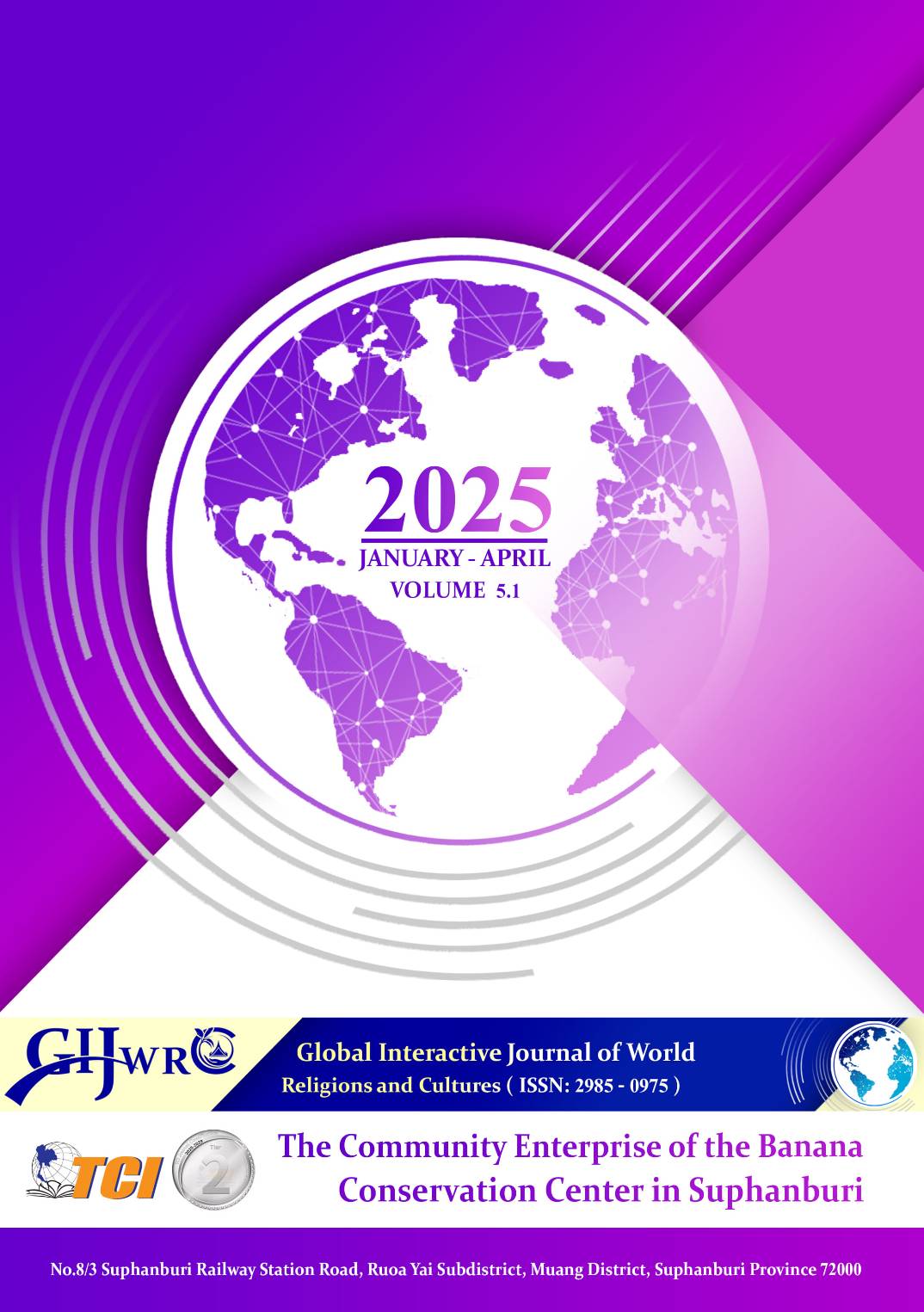STRATEGIC MANAGEMENT AND TECHNOLOGICAL INNOVATION OF MODERN EXHIBITION IN KUNMING MUSEUM: TAKE THE PROMOTION MINORITY ART EXHIBITION AS AN EXAMPLE
Main Article Content
Abstract
The objectives of this study are two: 1) to study and analyze the concepts and technical means of modern exhibitions, optimize the contents and forms of exhibitions, and 2) to improve the professionalism, artistry and appreciation of exhibitions, so that the audience can better appreciate the charm of ethnic minority art, through extensive collection of domestic and foreign museum exhibition strategic management, technological innovation and ethnic art exhibition related literature. This paper makes an in-depth analysis of the collected literature, sorts out the theoretical and practical achievements of existing studies in the strategic planning, implementation and evaluation of museum exhibitions, and summarizes the application mode and development trend of technological innovation in museum exhibitions. At the same time, focus on the characteristics of ethnic art exhibitions, audience needs and promotion strategies of the research content. During the exhibition of the Art exhibition of Ethnic minorities in Kunming Museum, the behavior of the visitors was observed, such as the tour route, the time spent in front of different exhibits, and the interaction with the exhibits and exhibition facilities. Through observation, we can understand the interest points and attention distribution of visitors to the exhibition content and display form, and find out the problems that may exist in the exhibition in terms of space layout, exhibit display and technology application. The museum's online exhibition platform, social media comment section and other channels were used to observe the audience's online feedback on ethnic minority art exhibitions. Analyze the audience's comments, likes, shares and other behavioral data, understand the audience's comments and opinions on the exhibition content, display technology and promotion methods, and obtain the online audience's needs and expectations. The results show that the application of VR, AR and other digital display technologies in ethnic minority art exhibitions has greatly enriched the presentation form of exhibition content, enhanced the interactive experience of the audience, enabled the audience to deeply understand the cultural connotation of the exhibits, and improved the satisfaction of tourists. From the in-depth exploration of the connotation of ethnic minority art to the formulation of differentiated exhibition themes and content planning, the museum gives full play to its advantages in cultural resources to enhance the attraction and influence of the exhibition. At the level of technological innovation, the use of virtual reality (VR), augmented reality (AR), digital display and other advanced technical means to break the time and space restrictions of traditional exhibitions, to bring immersive experience to the audience.
Article Details
References
Xiang Tong (2022). The realization of the digital protection of cultural relics in museums (J). Cultural Relics Identification and Appreciation.
Yu Yongzhe (2022). Research on the Development of China's Digital Museum based on the perspective of global communication and cultural relics protection (J). Identification and Appreciation of Cultural Relics.
Wei Yanqi (2019). A Museum in the New Media Environment: Cross-media, Participation and Ethics: A Museum as a media and media (J). Science Education and Museum.
Shan Jixiang (2011). Social Responsibility and Social Development of Museums, Sichuan Cultural Relics, no. 1.
Zhao Zhe (2004). Research on the Reform of China's State-owned Museums, master's degree of Shanghai Jiao Tong University Article, July 2004.
Zhang Jing (2019). On How to Give Full Play to the Social Service Function of Museums in the New Era, Cultural Industry, Phase 27.
Li Zhiyin: Some Thoughts on Museum Management, Heihe Academic Journal, November 2019.
Du Shuisheng (2006). The Development of Museums from the Definition of a Museum, Journal of Hebei University, 6th, designated time.
Ma et al. (2023). A Study on Optimal Opening Configuration for Art Museum Exhibition Space Considering Daylight Performance, Indoor Thermal Comfort, and Energy Consumption https://doi.org/10.3390/su152316431.
Yu et al. (2023). The Adaptive Evolution of Cultural Ecosystems along the Silk Road and Cultural Tourism Heritage: A Case Study of 22 Cultural Sites on the Chinese Section of the Silk Road World Heritage https://doi.org/10.3390/su15032465.
Yang et al. (2025). The impact of digital technology on the economic behavior of traditional minority villages in China People and Places in the Global Economy.
Jing Li (2012). The folkloric, the spectacular, and the institutionalized: touristifying ethnic minority dances on China's southwest frontiers https://doi.org/10.1080/14766825.2012.658809.
Francis & Lisheng (2023). Two Case Studies of the Material Metamorphosis of Cultural Heritage in China's Creative Economy Understanding Authenticity in Chinese Cultural Heritage.
Sun et al. (2024). Research on the Redesign of China’s Intangible Cultural Heritage Based on Sustainable Livelihood-The Case of Luanzhou Shadow Play Empowering Its Rural Development Sustainability, 16(11), 4555; https://doi.org/10.3390/su16114555.


